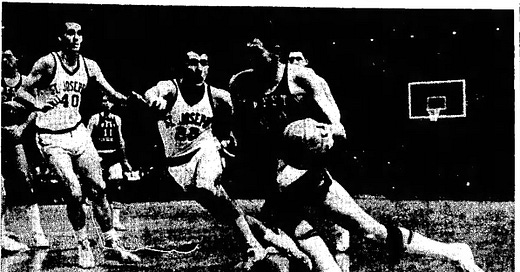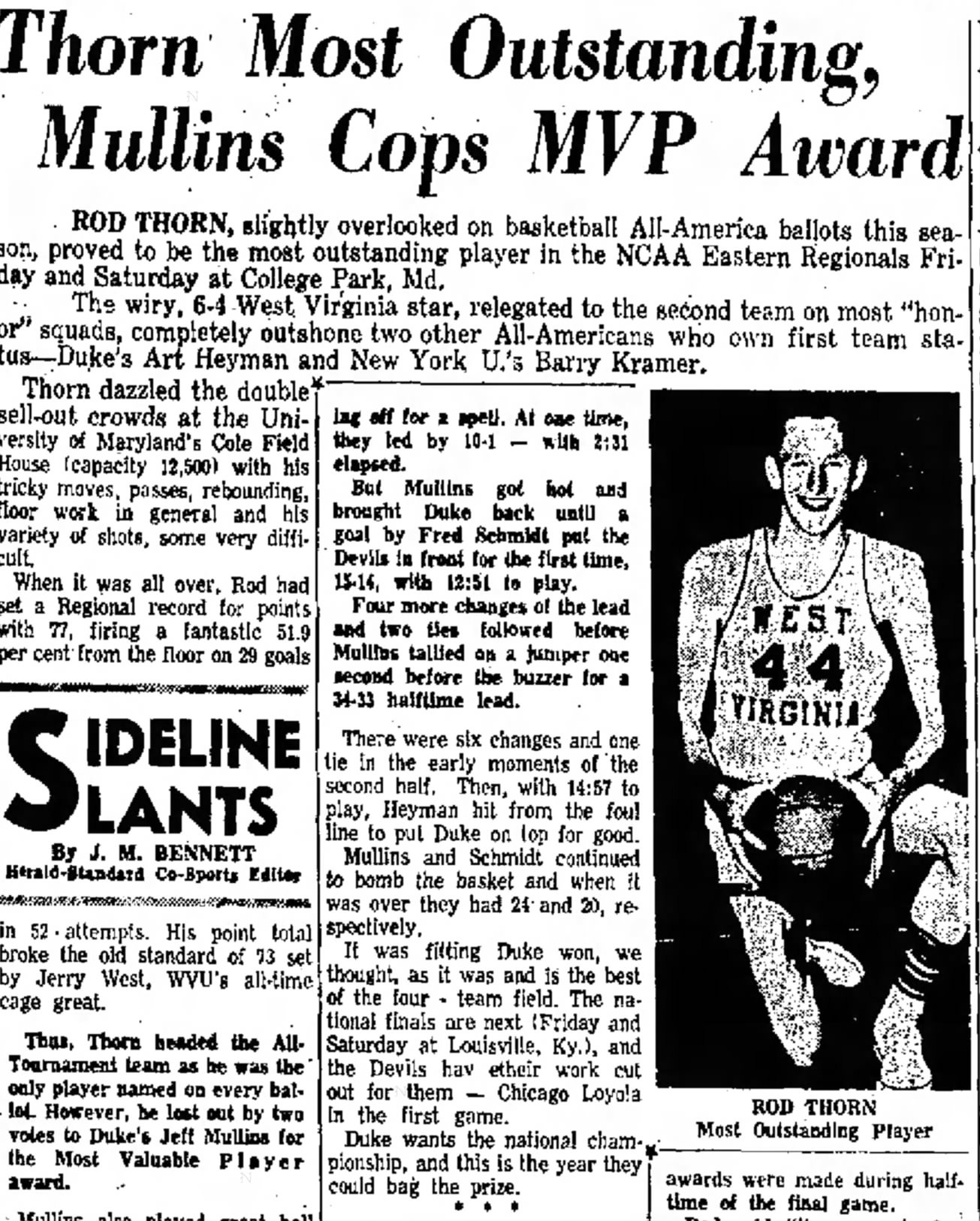March Madness Moments: Before He NBA Drew Boos, Rod Thorn Was A West Virginia College Hoops Treasure
Rod Thorn put on a March Madness scoring exhibition for the ages decades before becoming the NBA's Bad Cop.
For ‘90s kids like myself, the first word that comes to mind with regard to Rod Thorn is, *ahem* BOOOOOOOOOOO!
This is not because of anything Thorn did, mind you. His most publicly visible role in the national spotlight, however, was announcing second-round selections in the NBA draft. Anytime the then-NBA Executive Vice President of Basketball Operations stepped to the podium, the event’s attendees had been there for several hours and were mostly there to amuse themselves.
Rod Thorn also had the unenviable task of being the NBA’s Bad Cop to beloved commissioner David Stern’s Good Cop. Whereas Stern largely basked in the glow of a fast-growing game, which transformed from niche popularity when he took over in the early 1980s to a global phenomenon, Thorn’s duty often included doling out suspensions.
Other basketball fans might associate Thorn with the plaudits he earned later in his career. Before joining the league office, he was responsible for the Chicago Bulls drafting Michael Jordan.
When he left his position with the league office to head up the New Jersey Nets as the organization’s president, he helped transform a franchise that had spent much of its time since moving to the NBA from the American Basketball Association as bottom-feeders into a two-time Eastern Conference champion.
Even with the money and prestige that came from the Nets moving to Brooklyn with Jay-Z as one of its principal investors, the franchise has never come close to the success it enjoyed during Thorn’s tenure in the front office.
However, there’s another segment of basketball fandom that knows and loves Rod Thorn as one of the best damn scoring guards in college basketball.
Thorn earned All-American honors in 1962-63 with a 22.5-point-per-game average — actually a slight dip from his 23.7-point-per-game output. But there’s one performance in particular that places Thorn’s name among some college basketball legends like Bill Walton and David Robinson for their NCAA Tournament production.
Before the 1963 Tournament, a UPI column previewing the field described “West Virginia’s Rod Thorn, drawn from the mold of Hot Rod Hundley and Jerry West1 and wearing their former No. 44, [as] the man to watch in the Mountaineers’ matchup.”
The No. 44 gained even greater significance for Thorn in his West Virginia career that postseason.
After scoring 17 points in the Mountaineers’ Tournament-opening win over UConn, Thorn exploded for 44 points in the round that today is considered the Sweet 16.
Thorn was a one-man wrecking crew, virtually and quite nearly willing the Mountaineers past Saint Joseph’s single-handedly. Thorn dropped half of West Virginia’s points in a 97-88 loss to the Hawks.
Saint Joseph’s needed to shoot better than 60 percent from the floor as a team to counter Thorn’s 16-of-28 (57.1 percent) field-goal shooting and 12-of-15 from the foul line. Thorn also grabbed six rebounds in the loss.
In an era when the NCAA Tournament still included third-place games in the Regionals, West Virginia’s season didn’t end with the St. Joe’s loss. Thorn and the Mountaineers capitalized on one lost opportunity, closing out 1962-63 with a win over NYU. Thorn went for 33 points in that game, establishing an East Region record with 77 total points.
That particular record is somewhat dubious in modern context, considering Thorn wouldn’t have played his 33-point game after 1976 and beyond. However, his 44-point outpouring remains one of the 13 highest-scoring NCAA Tournament games of all time, tied with March Madness bests produced by such stars as Dan Issel (1970), Bill Walton (1973 in his legendary 21-for-22 shooting performance vs. Memphis), Hersey Hawkins (1988), and Glenn Robinson (1994).
Thorn’s 44 points ranked fifth-most in NCAA Tournament history at the time of his performance.
While the Regional third-place games are something the NCAA did away with, which most would probably agree was for the best, Regionals had both Most Valuable and Most Outstanding Players in 1963. I would prefer that both an MVP and MOP be awarded not only at the conclusion of the Final Four, but also as a way of making the annual NBA MVP debate less mind-numbing.
Hey, maybe that’s something Rod Thorn should have suggested when he worked in the NBA office during the 1990s. BOOOOOOOO!
Another characteristic Rod Thorn’s college basketball career shared with that of Jerry West? Both were declared a “natural resource” by the state of West Virginia legislature.





